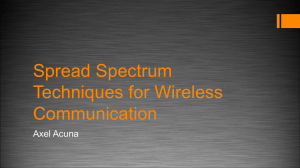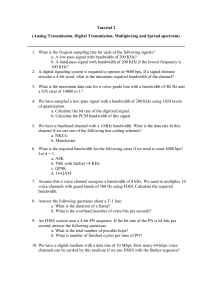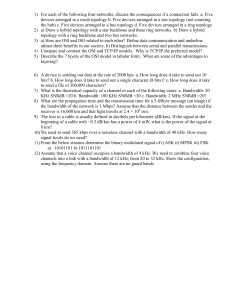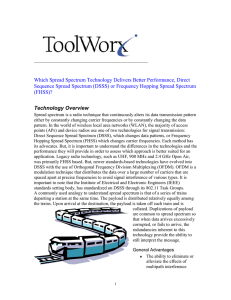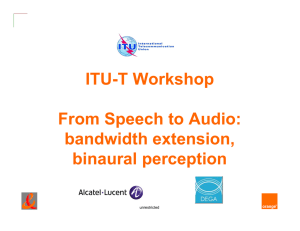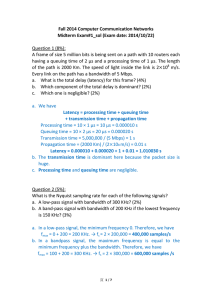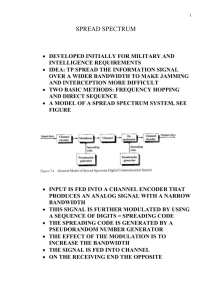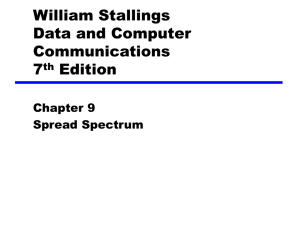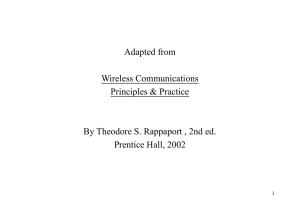EC312 Homework 21 Name: Read: (1) Lecture 21 Notes (2) Frenzel
advertisement
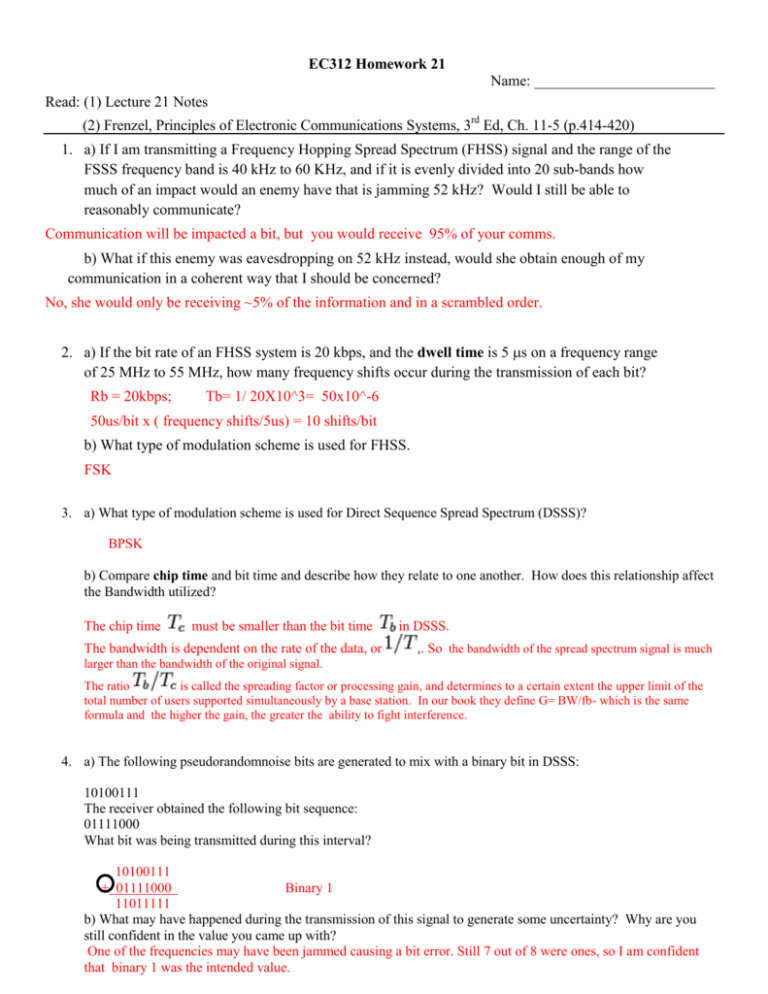
EC312 Homework 21 Name: ________________________ Read: (1) Lecture 21 Notes (2) Frenzel, Principles of Electronic Communications Systems, 3rd Ed, Ch. 11-5 (p.414-420) 1. a) If I am transmitting a Frequency Hopping Spread Spectrum (FHSS) signal and the range of the FSSS frequency band is 40 kHz to 60 KHz, and if it is evenly divided into 20 sub-bands how much of an impact would an enemy have that is jamming 52 kHz? Would I still be able to reasonably communicate? Communication will be impacted a bit, but you would receive 95% of your comms. b) What if this enemy was eavesdropping on 52 kHz instead, would she obtain enough of my communication in a coherent way that I should be concerned? No, she would only be receiving ~5% of the information and in a scrambled order. 2. a) If the bit rate of an FHSS system is 20 kbps, and the dwell time is 5 s on a frequency range of 25 MHz to 55 MHz, how many frequency shifts occur during the transmission of each bit? Rb = 20kbps; Tb= 1/ 20X10^3= 50x10^-6 50us/bit x ( frequency shifts/5us) = 10 shifts/bit b) What type of modulation scheme is used for FHSS. FSK 3. a) What type of modulation scheme is used for Direct Sequence Spread Spectrum (DSSS)? BPSK b) Compare chip time and bit time and describe how they relate to one another. How does this relationship affect the Bandwidth utilized? The chip time must be smaller than the bit time The bandwidth is dependent on the rate of the data, or in DSSS. ,. So the bandwidth of the spread spectrum signal is much larger than the bandwidth of the original signal. The ratio is called the spreading factor or processing gain, and determines to a certain extent the upper limit of the total number of users supported simultaneously by a base station. In our book they define G= BW/fb- which is the same formula and the higher the gain, the greater the ability to fight interference. 4. a) The following pseudorandomnoise bits are generated to mix with a binary bit in DSSS: 10100111 The receiver obtained the following bit sequence: 01111000 What bit was being transmitted during this interval? 10100111 + 01111000 Binary 1 11011111 b) What may have happened during the transmission of this signal to generate some uncertainty? Why are you still confident in the value you came up with? One of the frequencies may have been jammed causing a bit error. Still 7 out of 8 were ones, so I am confident that binary 1 was the intended value.
